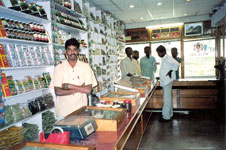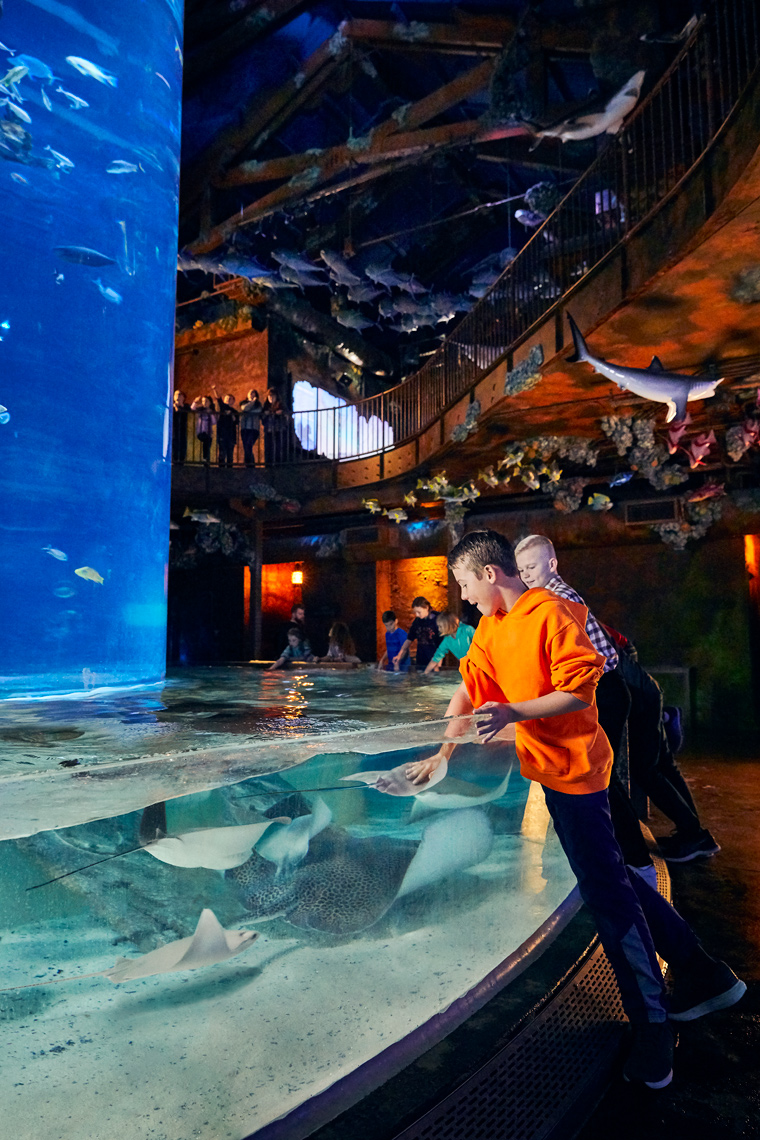State offers pristine scenery, plentiful seafood

Tea shops are popular in India. This tea shop is outside of Munnar. People who walk in the mountains of Kerala can smell fresh tea, cardamom, cloves and countless other spices.
This was my third trip to India, but my first time in the strikingly beautiful state of Kerala, traversing the southwestern portion of the country along the Arabian Sea.
Kerala’s palm tree-lined coastal backwaters and luscious tea-growing ghat, or hill, regions were unlike any other places in India I had previously visited.
I participated in the Southern-in-India Program in the summer of 2000, based at the University of Hyderabad; during this study abroad, six Missouri Southern faculty and 12 students visited dozens of Hindu temples (large and small, dedicated to various gods and goddesses), Muslim mosques and the phenomenal jewel-inlaid marble monument, the Taj Mahal in Agra. During the summer of 2002, in conjunction with my sabbatical, I returned to collect data for Project South Asia (with Dr. Karl Schmidt), visiting among other religious sites, a Sikh temple in New Delhi, the birthplace of Hindu Lord Krishna in Mathura and ancient Buddhist stupas in Sanchi. Thus, previous experiences exposed me to some of India’s rich, sacred heritages and current religious expressions.
In conjunction with Southern’s “India Semester” in fall 2002, I taught an inter-disciplinary course, Contemporary India: Dharma, Development and Diversity. Mac Kenney enrolled in that special topics course and, subsequently, invited me to participate with him in the McCaleb Peace Initiative. Kenney proposed a study abroad designed to gather information about the origins and maintenance of centuries of religious coexistence in India. During the course of that study, I was able to fulfill a dream of visiting Kerala.
A National Geographic wonderland, this emerald strip of land contains sandy beaches and forested highlands. A Hindu legend claims Parasuraman, the sixth incarnation of Lord Vishnu, once stood high on a ghat and threw his axe into the sea, commanding the sea to retreat. As it did, the picturesque land emerging from the parted water became Kerala. Some of the most romantic waterfalls and lakes in the world are located in Kerala, along with spectacular wildlife sanctuaries.
The calm and serene backwaters play an important historic role in the spice trade and a crucial contemporary role in the state’s economy, carrying coconuts, rubber and rice, as well as tea and spices, to trading centers along the coast. Three-hour backwater lagoon tours in small, wooden boats, propelled by their owners pushing a long pole, contribute to the local economy; Kenney and I enjoyed such a peaceful cruise along a coconut grove.
A social and political showcase for India, the state of Kerala has a well-developed infrastructure and boasts the highest literacy rates, the lowest fertility rates and the best standard of living in the country. This array of educational, health care and occupational opportunities – for both men and women – is virtually unknown to most Indians outside of Kerala. Kerala’s track record of increased human capabilities and greater gender equality is particularly intriguing.
Certainly there is absolute poverty in Kerala, but we observed more people there than in other regions of India who were healthy – both physically and emotionally – because of the greater availability of resources necessary for people to thrive, as well as to survive. Consequently, we noticed more people smiling as they conducted the daily tasks of their lives. Another striking difference we noted while traveling throughout Kerala was the relative absence of emaciated people on the streets, and there were fewer beggars confronting us.
Food, especially seafood, was more plentiful, given Kerala’s coastal and inland waters. Fishermen along the Malabar Coast use Chinese fishing nets to this day, another testament to Kerala’s international influences. We were invited onto a bamboo fishing platform in Cochin, where five fishermen let us test our hands at pulling in their large nets. We caught an eel and a small array of local fish, divided by size and type among various plastic containers. The silhouettes of these Chinese fishing nets are striking against the backdrop of a Keralan sunset.
Over the centuries, Kerala’s rich, alluvial soil has nurtured major plantations that produce some of the world’s most coveted teas, as well as cardamom, black pepper, cinnamon and ginger in abundance. Early Arab and Jewish traders exported Kerala’s spices to the West; these contacts in turn led to the arrival of Islam, Judaism and Christianity in the region. Kerala was the first place in India to host notable populations of these three faiths.
As Christianity, Islam and Judaism found their way into Kerala, a tolerant people welcomed them; an essential feature of Kerala’s heritage is communal harmony and religious tolerance. Since Kenney is exploring the historical emergence and contemporary significance of Christianity, Islam and Hinduism in other articles, I’d like to explore the religious tradition of Judaism in Kerala further.
We selected Cochin, a thriving city situated on the Malabar Coast of the Arabian Sea, as our home base.
One of our religious destinations was a Jewish synagogue reached by a ferryboat ride to the island of Fort Cochin across the bay. According to the guidebook, “Kerala and Her Jews,” the first Palestinian Jews arrived in the region more than 2,000 years ago, before the Christian era.
If, as many believe, Jesus’ disciple Thomas traveled to India and eventually reached Cochin, it would have been this Jewish community who welcomed him.
Although the history of Jews of Kerala is sometimes obscure, Hindu rulers granted the equivalent of modern-day tax breaks to the Jews’ independent principality. As a result of the generosity shown to Jews by successive
Hindu leaders, India earned the reputation as a land of religious tolerance.
Further, the fame of this Jewish enclave spread far, attracting thousands of Jews from Spain and other European countries over the centuries.
The current settlement, actually known as “Jew Town,” was established in 1567, and a synagogue was built there in 1568. While the history of Jews in India was not always marked by acceptance and integration, generally the Jews were not persecuted.
The Portuguese occupation, following Vasco da Gama’s discovery of the sea route to Kerala’s spice country, however, proved a time of torture for the Jews along the Malabar Coast. This “darkest period” continued until the late 1600s, when the Dutch appeared in Cochin and Jews were again allowed to prosper.
After the British assumed control in 1795, Jews continued to live peacefully under British rule; their holy days and Sabbaths were acknowledged by the state.
Jew Town was once a thriving community; however, most of the Jewish families of Cochin moved to the new state of Israel after its founding in 1948. Although the Jewish congregation has subsequently been reduced and only a handful of Jewish people remain, their presence provides a poignant example of religious coexistence between Hindus and Jews.
Kerala’s multi-layered international history has left additional cultural artifacts and religious traces throughout the state. Many Hindu temples of Kerala reflect ancient architectural wonders, occupying large areas where devotees move through courtyards-within-courtyards before reaching an inner sanctuary. Paintings and carvings depicting motifs from the Ramayana grace the walls and ceilings of these temples. Early Christian churches were built with distinct architectural features similar to ancient Hindu temples, although later churches were influenced by the Portuguese and recent ones by contemporary forms of architecture. In places of worship, Hindu and Christian iconographies often merge: at the coastal shrine to St. Thomas, the Mar Thoma, a statue of Jesus shows him rising from a lotus flower, a fitting symbol of Kerala’s harmonic blending of religious traditions.
Your donation will support the student journalists of Missouri Southern State University. Your contribution will allow us to purchase equipment and cover our annual website hosting costs.
















